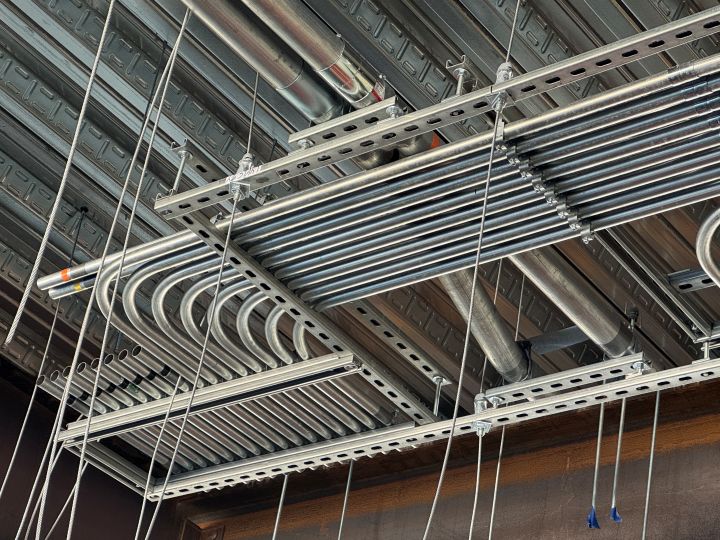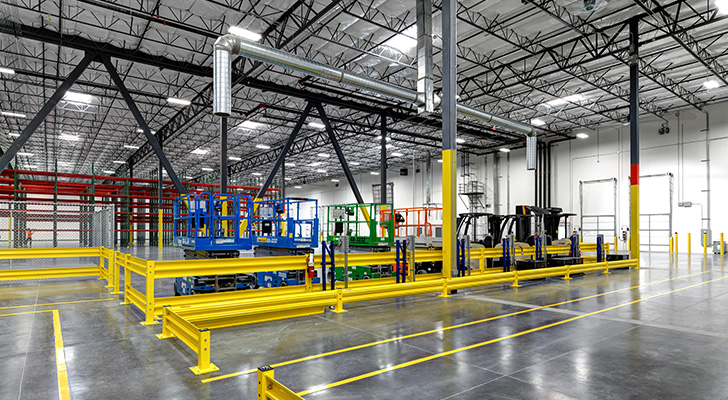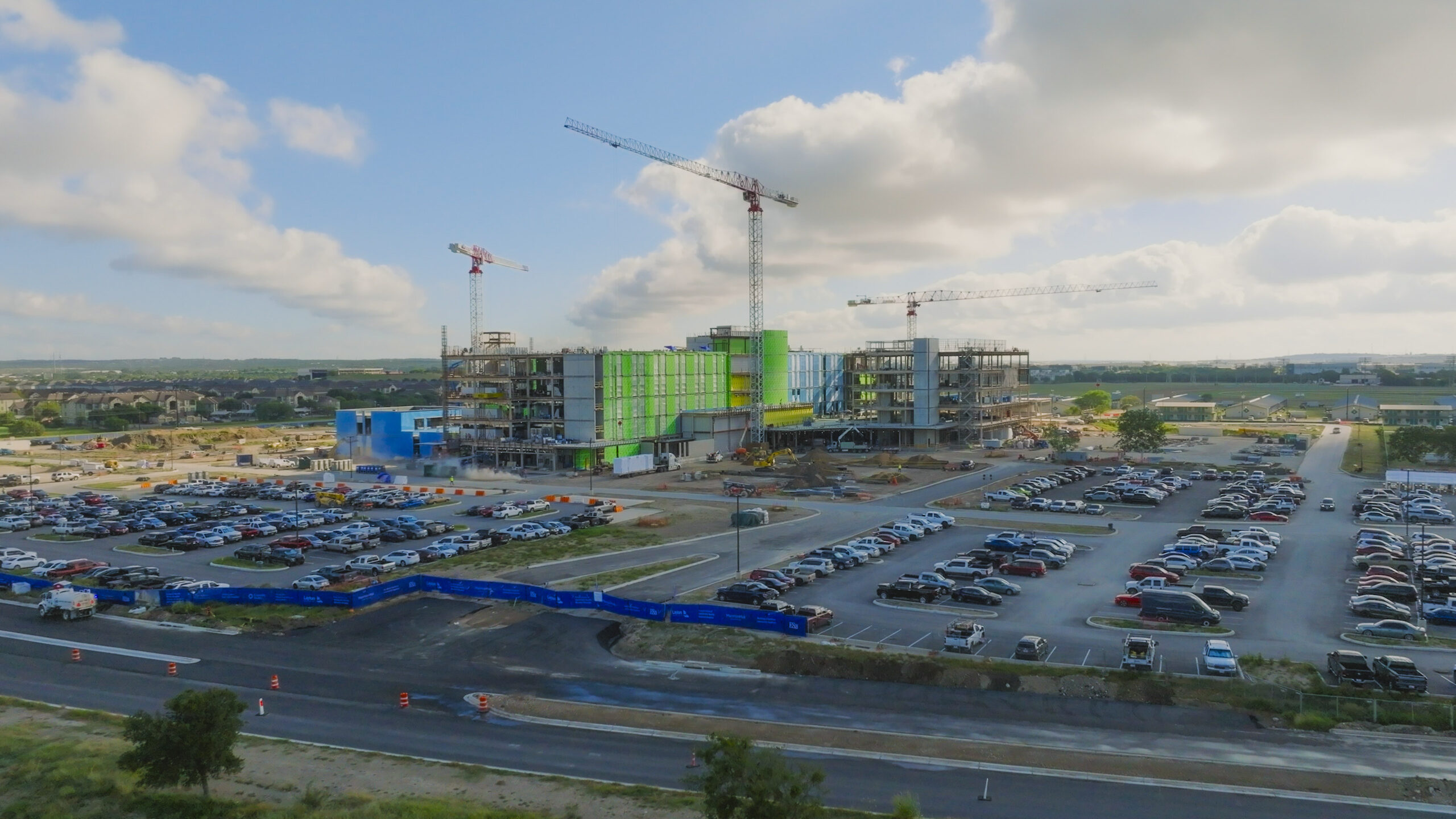Standard Hospital, Unconventional Build
At its core, University Health’s Retama Community Hospital will be a seemingly standard facility—five-stories, 147 beds, parking, a helipad, and an attached outpatient clinic. It’ll also include 177,000 SF of shell space for future growth. All in, Retama will bring five adult service lines to the San Antonio community: general medicine, obstetrics, general surgery, cardiac, and orthopedics.
Retama’s construction, however, hasn’t been standard at all. From strategic 2am concrete pours, manufacturing over 7,000 of the construction components off-site, and even utilizing augmented reality to give UH stakeholders a preview of the final outcome, Layton’s project team has implemented the unconventional at every turn.
Assembly Required: Prefab Takes Center Stage
“Early in the design stage, we knew we needed to prefabricate as much of the facility as possible to mitigate the labor constraints in the marketplace,” said Layton Construction Manager, Steven Knowles. Prefabrication comes with many benefits. For one, it enhances the quality of the overall build, as components are manufactured in an isolated setting and to machine specifications.
Because these components arrive onsite ready to install, this building method reduces construction timelines as well. “All owners love an expedited schedule,” said Knowles. “The community really needs this facility, so it was important to Layton and University Health that we deliver it quickly. Prefabrication allowed us to do this.
7,000 Components and Counting
In total, Layton oversaw the installation of over 7,000 prefabricated components—some built by our own trades off site and others by third parties from as far as Pennsylvania. Loaded into the hospital with cranes and forklifts, these spanned everything from patient toilet room pods and room headwalls to electrical racks and CUP equipment skids. Even layout was automated using a robot to print floor plan components on the concrete.
With so much labor happening off site, efficiency and safety naturally increase. A project of this size sometimes requires over 650 daily workers on site. Yet, our teams are on track to shift over 170,000 labor hours off site, which equates to reducing the peak headcount by more than 160 skilled craftspeople, pushing the work into safer manufacturing environments.


Pour Decisions: When 2AM is Go Time
A project of this magnitude requires massive concrete pours for monolithic footings and shear walls, and they need to happen quickly to stay ahead of the prefabrication schedule. Starting at 2am, Layton began pouring footings and foundations, continuing until 7:30pm that evening (yes, that’s 17.5 straight hours of nonstop concrete work). In total, we poured 1,338 cubic yards of concrete—enough to support 72 average-sized San Antonio homes—across five major structural components, allowing our trade partners to seamlessly transition into steel erection activities. With two pump trucks and three tower cranes in action, the site buzzed with coordinated teamwork.
Knowles praised the team’s efficiency and determination: “This was a massive undertaking, and everyone came prepared. It’s incredible to see our team push boundaries and execute such a complex operation flawlessly.” He added, “We know how to build. This milestone reflects the dedication, determination, and expertise of our people. It’s a testament to why clients trust Layton to deliver.”
Seeing is Believing with Augmented Reality
With over 7,000 prefabricated components being installed and 650 tradespeople working rapidly, Layton added another innovative layer: augmented reality. Our in-house Virtual Design and Construction team partnered with MarmonMok and WSP to create AR experiences that allowed UH stakeholders and others to take virtual tours of the facility long before construction was complete.
Viewed from tablets and phones, these users could “walk” through operating and patient rooms, test different lighting schemes, and experience the facility as if it were already built.
Augmented and virtual reality are particularly useful on our healthcare projects because they enable our teams to catch issues before they become costly problems. Surgeons can request an outlet be moved, engineers can spot system clashes, and we can identify otherwise hidden hazards. Most importantly, this technology enables us to avoid rework and schedule delays while enhancing collaboration between stakeholders—something the Layton team considers essential to all our projects.
Building the Places where we Live, Work, Play and Heal
Retama Hospital will welcome its first patients in 2027, but its impact on what’s possible in healthcare construction is already being felt across Layton. Though we’re spread across 16 offices nationally, we believe in sharing what works and what doesn’t, so every project benefits from our collective expertise. Through aggressive prefabrication, strategic concrete operations, and implementing AR technology, we’re on our way to helping University Health bring essential service lines to San Antonio families. In the end, that’s what matters most.
Have questions about Layton’s healthcare experience? Or have a project coming up? Check out our portfolio and get in touch with our healthcare team to discuss.
About Layton Construction
Layton Construction is a privately held national general contractor, delivering predictable outcomes in commercial construction since 1953. Headquartered in Salt Lake City, Utah, Layton operates from 16 strategic offices across the United States, employing more than 1,700 construction professionals who serve diverse markets including healthcare, education, commercial office, industrial, hospitality, and multi-unit residential. Founded on the core values of honesty, unity, safety, and quality, Layton has built a reputation for excellence in complex project delivery while maintaining strong partnerships with clients, architects, and trade partners nationwide.

Considering the complexities of cold storage facilities, their construction demands a specialized approach and expertise. And with such a rapidly growing market, key players like Layton are primed and poised to step up.

Layton depends heavily on the expertise and capabilities of our trade partners. Led by Cherelle Cortez, our Trade Partner Engagement and Development team is focused on increasing economic impact and the growth of our trade partners.

